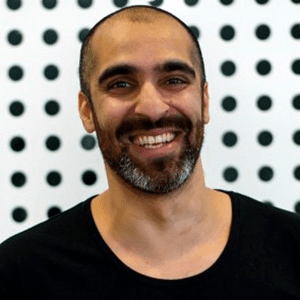

#47: The Talent War – find, hire and retain the right talent for your business
Trudy MacDonald, MD of TalentCode HR and award-winning speaker, shares insights about what’s going on in the marketplace with the war for talent and how talent professionals are applying innovative recruitment marketing strategies for success.
In this podcast, find out what are great businesses doing differently to find and attract the right talent and why an Employee Value Proposition is more important than ever.
As Trudy explains it’s also important at the same time to employ different ways to retain your top performers and keep them from getting poached.
So getting the right message out there is a key part of the journey, but there’s another really important step, which is where do these ideal applicants hang out. And they’re not hanging out on SEEK. They’re not looking for jobs in their lunch breaks. So starting to be really creative around that.
I’ve got some organisations we work with, they approach local sporting clubs because they know that’s where the target applicants are going to be. I’ve got another client who’s actually set up their own forum on LinkedIn, whereby they’re attracting young people who want to engage in industry conversation, building relationships with them, and then tapping them on the shoulder to say, ‘Hey, do you want to come and work for us,’ after they’ve started to engage them in meaningful content.
Stephanie: Isn’t that clever? So building your own talent pool, which was a-
Trudy: Absolutely.
Stephanie: … Conversation 10 years ago.
Trudy: Yeah.
Stephanie: I like the learning for talent professionals. To learn from marketing. And my experience over many years with talent professionals, that’s a real shift.
Trudy: Absolutely.
Stephanie: From, this is how we do it, this is what you’d need to do to be even considered to work here. What you are talking about is a complete paradigm shift.
Trudy: Yeah. It’s about the value proposition and another really killer interview question that can help lockdown talent, and close the deal with those key people, is to ask people: beyond this job, what’s your next job? And most people don’t expect to be asked that, but if you can get them to start to articulate where they see themselves going beyond this job, if you can then very authentically offer to help them build the capabilities, whilst in this job, that are going to set them up for the next job, whether it be at this business or somewhere else, they’re sold. Because what you’re doing is you’re building a future for them, and that’s pretty hard to turn back.
Now, the pretty cool thing about this way of thinking is when you’re competing against silly money. And I’m hearing examples of pretty average people being offered $40,000 more to move business.
Stephanie: Is that right?
Trudy: Absolutely. And that’s the kind of thing that’s going on. You can’t compete with that. And in fact, it’s not commercial to try and compete with that, particularly in terms of base salary. What we need to do is think more holistically around what really motivates people. And if you can get to the heart of that, and it’s got to be relevant for those specific applicants that you’re attracting, because it’s going to be different, the different populations in the market, then you can really tap into something that’s going to help you with this problem.
Stephanie: I’m finding that a conversation about learning, at this organisation you will learn a lot about business and you learn it day-to-day from the people who are actually running businesses. But that discussion about learning, and I’m finding very compelling. And it fits in with what you’re saying, Trudy, about let’s get you ready for the next job, which is disarming also.
Trudy: Absolutely. Absolutely. And it shows that you’re really investing in them. So, Stephanie, that leads me to the same side of the coin, which is what are we doing to retain?
Stephanie: Yeah. I was going to say that because if everyone’s trying to poach the people, as someone did try to poach one of my best people recently.
Trudy: Yes.
Stephanie: How can you make sure that you’re keeping them?
Trudy: Yeah. That’s right. So there’s a few different things here and great organisations are doing these things anyway. But I think it’s a bit of a wake up call for organisations who have become a little bit complacent around this. So the first thing is getting right back to the core of what motivates us as humans, to want to do a great job and to want to be part of a community. And that community is your work community.
So there’s a number of different buckets here. Let me talk about culture. Let me talk about, as you mentioned, development and investing in people, and then the third one is remuneration, because I think it’s worth a conversation around some of the changes that are happening in that space.
So if we start with culture, right at the heart of who we are as humans, we want to feel valued and we want to feel appreciated.
Stephanie: Yes.
Trudy: So what I’m seeing with a lot of organisations is there’s a real need to upskill leaders and managers, at all levels, around how to effectively motivate and engage in the current environment, which is disrupted, it’s disjointed, it’s hybrid, it’s remote. Many of them don’t have the skills to do that. So how do we catch people doing good things? How do we give meaningful feedback in a way that people feel supported? And how do we create meaningful connections between people in our teams?
Stephanie: And I think more than ever, as leaders, it’s being in touch with how you are managing and dealing within the environment right now.
Trudy: Yes.
Stephanie: Because I am seeing some leaders falling into the trap of, perhaps, being so internally aware of what they may be finding difficult that they’re assuming people around them are.
Trudy: Yes.
Stephanie: Or you are finding things difficult, but you’d need to have a role of galvanizing those around you because everyone can’t fall into a hole together on the same day.
Trudy: Yeah, that’s right. So we’re doing a lot of resilience training with organisations. We’re helping leaders understand how to create resilient teams. And a lot of this is about connection. So I think a really useful way of thinking about this is, when people are physically together in the workplace, what happens? What are our ways of working? And how is it different when we’re remote? And the obvious difference is we’re not connecting as much. So the ad hoc sharing of information and connection isn’t happening.
What some organisations are trying, but it’s not working so well, is they’re setting up Friday drinks via Zoom.
Stephanie: Yeah.
Trudy: I think most people are a little bit over that. And what’s happening is when you’ve got 20 people on a Zoom call trying to talk over each other and the dominant people dominate, people start to disengage. The really powerful things that we’ve seen happen, and this links to the second point, which is, what are you doing to invest in your people? Because when you invest in them from a development perspective, you’re actually giving them a sense of future. You’re building their careers. That’s giving them future earning capability, but it’s actually really building their sense of worth and self-esteem and how they can contribute to do meaningful work.
So we’re doing a lot in the space of leadership development at the moment. And one of the most effective things we’ve found in terms of engaging and retaining talent is, beyond workshops, which need to happen, is to create cross-functional pods. What I mean by that is, is small groups that come together from across the organisation. Often their teams coming together from different divisions, or if you’re in different geographic areas, bringing them together and facilitating a process where they’re engaging in meaningful conversation and meaningful connection. So it’s the difference between having drinks, which everyone’s a little bit over, to smaller groups; meaningful, purposeful conversation.
And even beyond the life of these programs that we’re running, we’re hearing from team members, let’s keep doing this because now I’m feeling connected. Now we’re sharing ideas. Now we’re innovating and learning from each other. And I think we can’t underestimate how powerful that is for people and how impactful it will be on retention.
Stephanie: I like what you’re talking about there, Trudy, because I think in these times, there’s something about being intentional about what the model is.
Trudy: Yes.
Stephanie: That last year, 2020, was very reactive. Everyone home. that’s fine. We’ve survived it, off we go.
Trudy: Yeah.
Stephanie: This year we’re seeing hybrid and a return to a physical workplace and in some areas in Australia, particularly in Sydney, it’s going to be a remote workforce for the medium-term. And I think it’s important for leaders to be very clear and put some thought into what the model is, rather than just assuming that we’re just all on hold, waiting to get back to what?
Trudy: Yeah, that’s right. We can’t afford to do that. And this is where we’re seeing burnout and this is where we’re seeing people being open to other opportunities, where they wouldn’t have been previously, because they’ve just had enough and they’re looking for a change.
So, Stephanie, I really like that. What are our intentional ways of working that are going to really take the culture to the next level? Engage people, create meaningful opportunities to collaborate and to do meaningful work.
Stephanie: Yes.
Trudy: Really, really powerful.
Stephanie: And so, finally, let’s talk money.
Trudy: Mm.
Stephanie: Well, you said you’re seeing some new things with rem strategies. What are you seeing?
Trudy: Yeah, yeah. So there’s a few things here. And I think when we’re in this kind of environment, the cracks start to appear with organisations if they haven’t had a good, solid system in place. So I’m hearing and seeing all sorts of things. Some of them are horror stories, some of them are organisations are starting to do it well. But I think that the overriding themes here are this, that salaries are increasing at the moment, across the board. I’m not sure how long that’s going to last for. What goes up, must come down. The reality is this is what most leaders are facing at the moment. There are opportunities out there in the market to earn more money than what they’re paying their people currently. So there’s risk.
So one of the things that I’m seeing is for organisations to not just jump on this bandwagon, because it’s not sustainable. As soon as your fixed cost base increases, you are very vulnerable as an organisation, as things start to dip, and particularly if the revenue and your profits aren’t increasing at the same level. So we know that we can’t do that. So the big question is how do we overcome this when we’re competing against money?
I think, for the first time, this is where the role of variable remuneration or incentive schemes are actually becoming much more attractive to organisations and more applicable to a greater spread of roles. Previously, it may have been something that was available just to senior or high value people. Now it’s something that organisations are looking at across the board.
And the concept here is one of mitigating the risk. And what I mean by that is, if you can keep your fixed remuneration within the appropriate salary bands and fair. So it may mean that you need to increase slightly, but you don’t want to do silly things. But then create a very clean model whereby your applicants know, or your current people know, that they can earn well above market average, through a variable piece. You create a win-win situation whereby the individual can earn more if they’re performing and their department’s performing and the company’s performing. And the organisation also wins as well, because it’s directly linked to their profitability.
Stephanie: Interesting. Well, it pays for it, then. It pays for variable.
Trudy: Absolutely.
Stephanie: So I think that rem strategy would be a podcast of itself. It’s a topic all on its own.
Trudy: Yes.
Stephanie: I think that you have given us such interesting insights today, Trudy, into what’s going on in the market. That war for talent, that challenge not so much that people are looking for the candidates who are already looking for jobs, people are looking for candidates who are currently working for you and that are currently your very best people. So what you’ve talked to us about, with attracting the right talent, is taking a marketing approach. What’s your ideal candidate look like, and where do they hang out and how can you appeal to them?
And then a great conversation about the different ways that organisations can look to retain those team members that they have. And I think that that’s been a once around what’s going on in the world of work right now from a talent perspective, but your expertise and insights have been so valuable, Trudy, as always. And Trudy McDonald, thank you very much for joining us on TEC Live.
Trudy: My pleasure. Thanks, Stephanie.
Stephanie: Discover more about TEC at tec.com.au.



